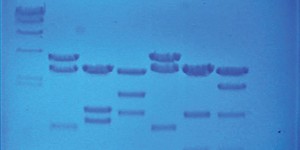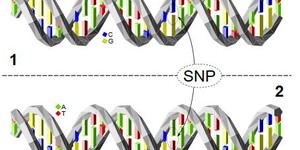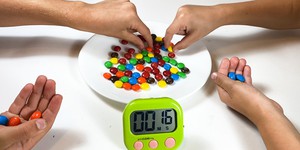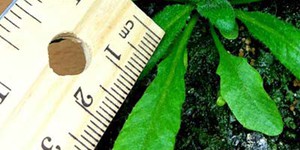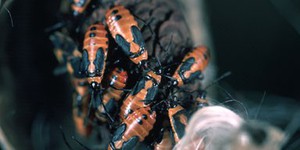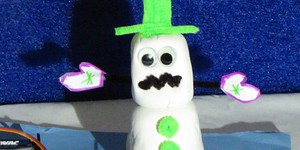Others Like “X-inactivation Marks the Spot for Cat Coat Color” (top 20 results)
|
Some characteristics, like the shape of your hairline or whether your earlobes are attached or detached, are inherited from your parents. In this science project you will see how writing these characteristics onto a family tree can help you determine how they are inherited
Read more
Are you interested in the technical and ethical aspects of genetic screening, forensic science, and DNA fingerprinting? Scientists use different forms of a gene, called alleles, to differentiate between two fingerprints. One such sequence used in human DNA fingerprinting is the Alu repeat (a 300 base pair repetitive sequence of DNA) on chromosome 16. During evolutionary time, up to 1 million copies of the Alu repeat have become randomly inserted throughout the human genome. Within a specific…
Read more
Our genes are made up of hundreds to millions of building blocks, called DNA nucleotides, and if
just a single nucleotide of DNA becomes mutated it might cause a devastating genetic disease. But
sometimes a mutation actually does no damage. What kinds of mutations have to occur to cause a genetic disease?
In this science project, you will explore online genetic databases to identify how a mutation in a gene
can result in a dysfunctional protein, and how other mutations may have no effect…
Read more
Find out the real explanation for why your parents are so weird! Here is a science project that lets you explore the internet to find out why your "DNA blueprint" is so important to health and disease. In this science project, you will use methods that bioinformatics and biotech scientists perform on a daily basis to decipher the human genome in their efforts to diagnose and treat genetic diseases.
Read more
In a survey conducted from 2007 to 2010, the U.S. Centers for Disease Control and Prevention reported that about 49% of people in the United States had taken at least one prescription drug during the past month, and about 22% of people had taken three or more prescription drugs. People are prescribed drugs all the time, but prescriptions can be dangerous because people can have different responses to drugs. These responses largely have to do with genetic mutations. Why are some genetic…
Read more
In the wild there are two types of animals: the hunters and the hunted. A good predator is always on the prowl for fresh prey. What can an animal do to stay off of the menu? Some animals have evolved to use a variety of camouflage tactics so they can fool their predators and increase their chances of survival. In this science project, you will be the hungry predator hunting for M&M® prey. But it may not be as easy as it sounds — some of your prey will be camouflaged. Will they be…
Read more
Have you ever wondered why a plant that grows well in one environment may not survive in a different environment? For example, plants that grow well in a wet jungle would probably not do so well in a dry desert, lacking enough water. This is because plants have adapted to their specific environment. Some plants have even adapted to tolerate chemicals that would usually be toxic, such as various heavy metals. In this plant biology science project, you will investigate whether different…
Read more
Milkweed bugs, as their name suggests, have a close relationship with the milkweed plant. The plant produces an irritating, milky sap, and toxic compounds, but somehow the milkweed bug is unaffected by them. Instead, it concentrates chemicals from the sap in its body, acquiring an unsavory taste that, along with its bright coloration, protects it from predators. Given this close relationship, will the milkweed bug exhibit a color preference for egg-laying sites? This project is designed to find…
Read more
A simple circuit and a servo motor are all you need to turn any work of art into an interactive moving creation that is happy to see you. Light sensors see your shadow as you walk past your artwork and make a servo motor move back and forth. Waving arms? Turning heads? It is all up to you!
Read more
Do you read the list of ingredients in foods and drinks before you buy them at the grocery store? If you do, you may have noticed that many of the items, especially colored drinks, contain dyes with names such as FD&C Blue 1, Red 40, or Yellow 5. But how much dye is needed to create all these colors? In this chemistry science project, you will build a simple spectrophotometer that is able to measure the concentration of colored chemicals in solutions. You will test your device by measuring…
Read more
|
Explore Our Science Videos
Cotton Ball Launcher - Fun STEM Activity
Fire Snake Experiment
Make a Lung Model – STEM activity




